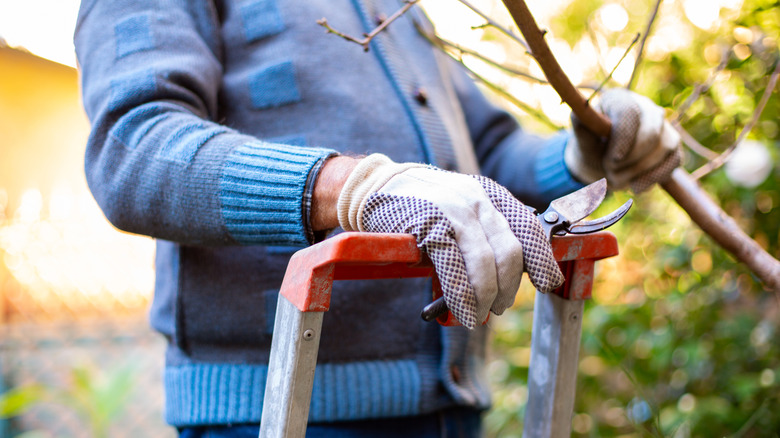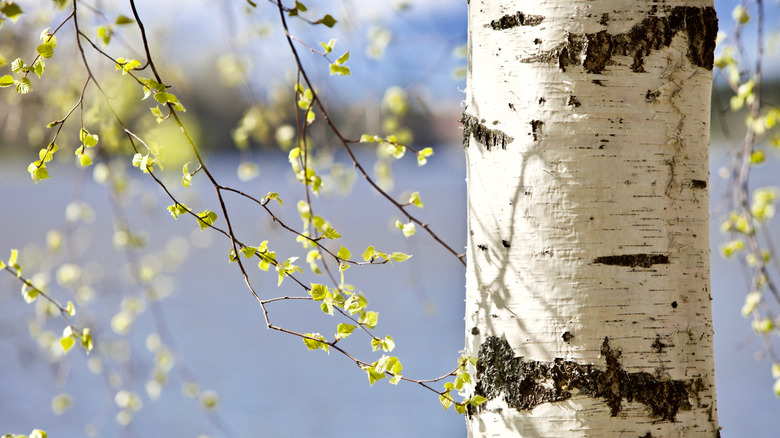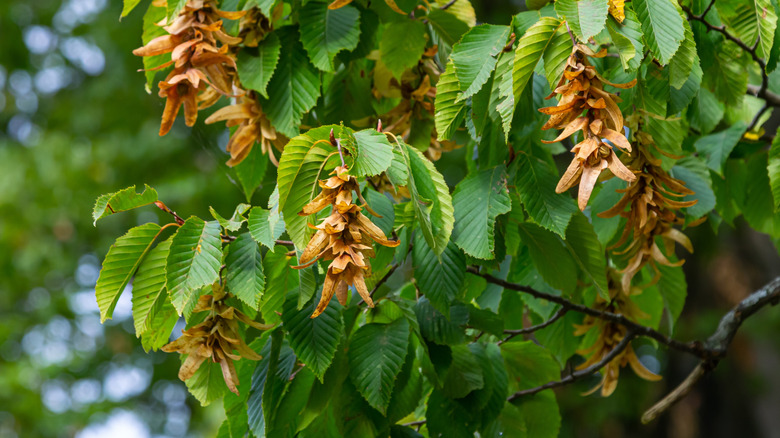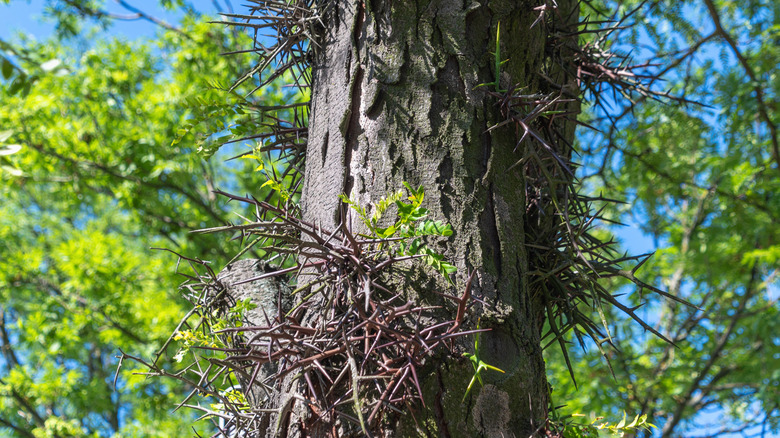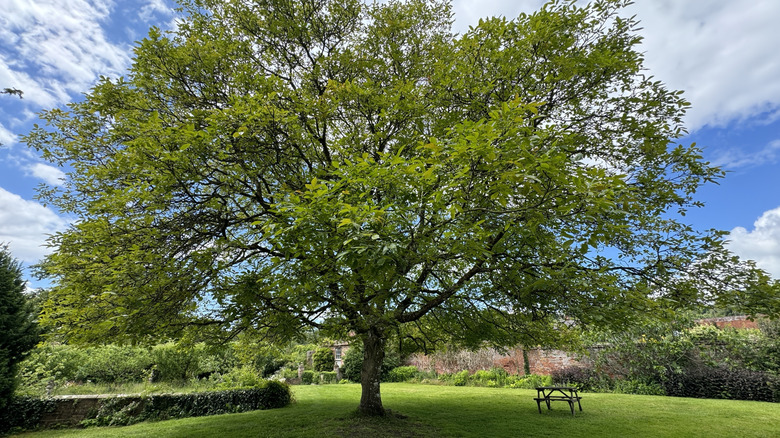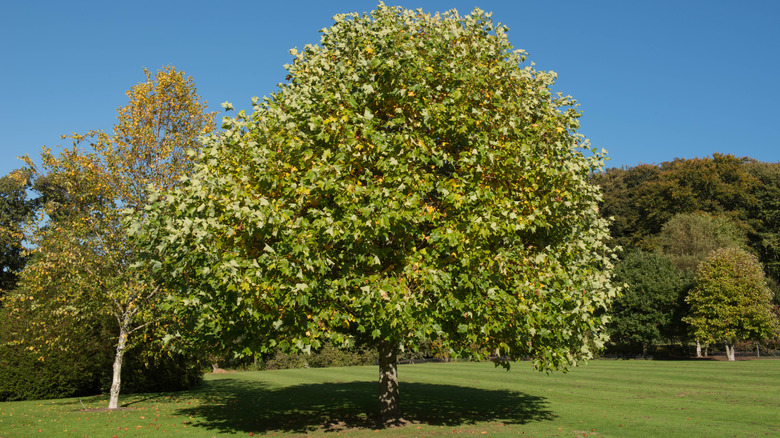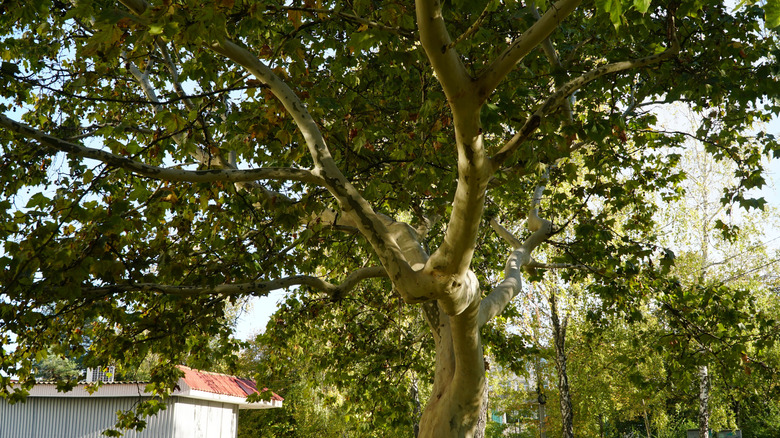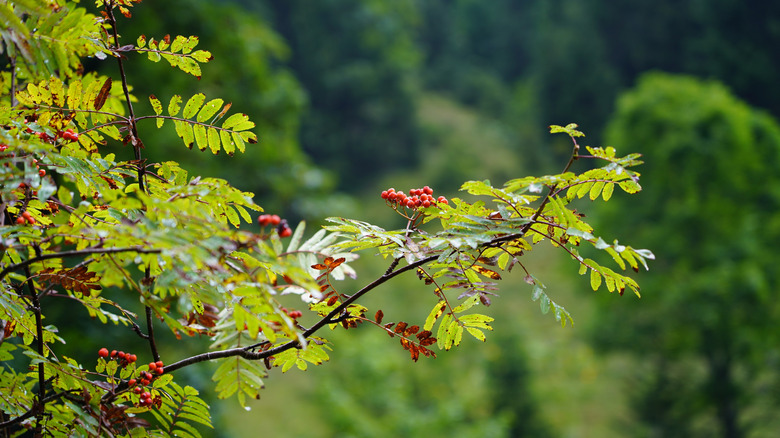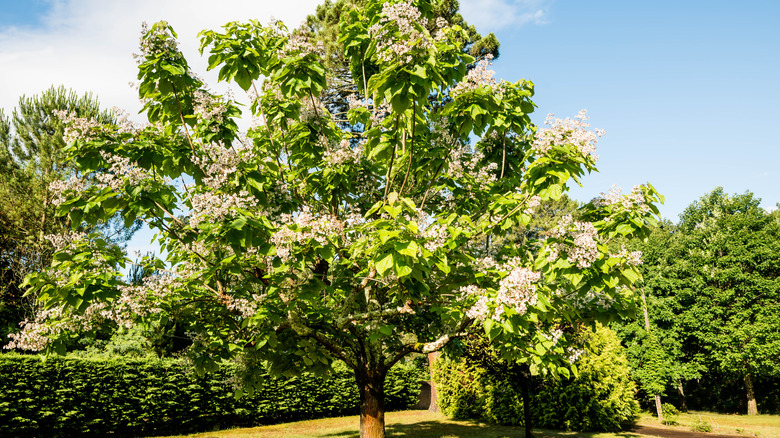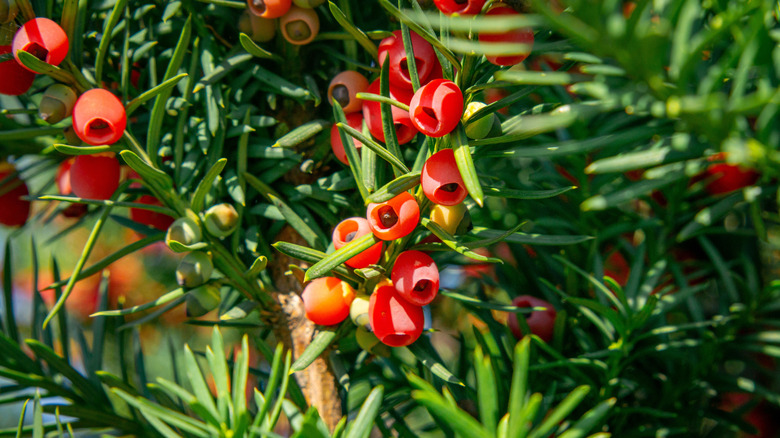9 Tree Species You Can Trim Back In October Before Cold Weather Settles In
When October rolls around, the leaves begin to fall and cooler weather makes an appearance, you might be thinking about all the things you need to do around your house and yard to prepare for winter. If you have trees on your property that you want to trim, think twice before grabbing those pruning shears. While trees need to be trimmed to stay healthy and continue to grow strong, it's not a good idea to start hacking away at them whenever you want. Certain trees respond better to trimming at different times of year. Deciduous trees, for example, are a great type of tree to consider trimming in October before the cold weather settles in.
Deciduous trees shed their leaves in fall and go dormant in the winter. With the leaves off the tree, it can be easier to spot the areas of the tree that need attention, like dead branches or overcrowded areas that need thinning. Of course, it's important to consider safety before attempting to DIY your fall tree trimming adventures. Make sure you have all the appropriate gear and know how to properly handle the necessary equipment. If you're unsure about tackling the project on your own, it's a good idea to contact a professional.
Birch Trees
Birch (Betula spp.) trees are great garden trees because of their unique bark pattern. It's important to trim them annually because they don't typically have a very long lifespan but trimming them can help extend that. Just don't cut them back in spring or summer when they are more likely to bleed, which means an excessive amount of sap can spill out at the cut lines. As with other deciduous trees, birch trees benefit from being trimmed in the fall. Just be sure not to cut any more than 25% at a time or the tree can weaken and die.
Hornbeam Trees
There are about 25 species of hornbeam (Carpinus spp.) trees, which are actually a part of the birch family. The American hornbeam is sometimes called a musclewood because of the muscle-like shape of the trunk. Hornbeams generally have long lifespans and require minimal trimming, though pruning should be done in the fall, like most other deciduous trees. Removing dead or diseased branches can help maintain the health of the tree, and doing so in the fall will lessen the bleeding of sap and avoid disease.
Honey Locust Trees
Honey locust (Gleditsia spp.) trees are another tree that can be trimmed in October. These trees are noticeable by the thorns growing in clusters on the trunk, requiring extra caution when tending to the tree. There are thornless varieties, however, that are more common in cities. It also grows sweet fruit pods from the branches that look similar to pea pods. While the Honey Locust might require a bit of extra trimming when it's younger, it requires less as it gets older. Trimming it every three to five years will suffice to keep it healthy.
Walnut Trees
Walnut (Juglans spp.) trees will grow well and produce abundant walnuts in the right, well fertilized soil. They can grow large canopies as well as being very tall and wide. You might need to trim them if you don't want them to overgrow your space. But of course, be sure to trim them in fall to avoid overbleeding of sap and to remove any dead or diseased branches. There are plenty of gardening myths about walnut trees, but they can still make great yard or garden trees – just be mindful of what you plant beneath them.
Tulip Trees
Tulip tree (Liriodendron tulipifera) is a good shade tree, as it can grow tall with large canopies, assuming you have the space for it. They grow beautiful flowers that resemble tulips, hence the name. Tulips are quick-growing trees and can grow up to two to three feet per year and have a fairly long lifespan of 200 to 300 years. Tulip trees don't require extensive pruning unless there are damaged or have diseased branches, though trimming can encourage more dense growth. So you can be sparing with your fall trimming of any tulip trees.
Plane Trees
The plane tree (Platanus spp.) has ten different species of large, deciduous trees, including the popular London plane, which is actually a hybrid of the American and the Oriental plane trees. They are a popular garden tree because of their ease of care, not to mention how aesthetically pleasing they are. They are hearty trees that don't succumb to disease very often. Pruning them is important since they can grow quickly. Fortunately, they respond well to trimming and doing so in the fall helps keep them healthy and strong. You can save your London Plane tree by catching diseases and issues early.
Mountain Ash Trees
Mountain ash (Sorbus spp.) are small deciduous trees known for their brightly colored fruit that resembles small berries. They are also commonly called rowan trees and are great garden trees because they are a fast-growing flowering tree that boasts beautiful blooms and colorful fruit. Once they're established, they don't require much attention, making them a perfect addition to your yard, especially for gardeners who are short on time or simply don't want to spend all of October pruning branches. Trimming dead limbs or damaged branches can be done in the fall to maintain the overall health of the tree.
Catalpa Trees
Catalpa trees are generally deciduous trees and grow small, white flowers that are very popular with bees. Catalpa trees are perfect for smaller gardens because they can be maintained as more of a shrub than a large tree, if pruned appropriately. They respond well to abundant trimming, so it's okay to take out large branches with excessive growth. Doing so in the fall will have the greatest health impact on the tree.
Yew Trees
Yew trees are in the genus Taxus family (Taxaceae). While some are more of a shrub, most can grow into tall trees of about 80 feet high. Yew trees can be trimmed once a year in early fall, making October the perfect time to tend to it. Yews have yellowish blooms in spring time and have seeds wrapped in a red fruit-like berry that is attached to the tree on one side and open on the other. Yews are a sturdy, dense tree that makes for a great privacy wall in your yard. Trimming it once a year will help it grow back fuller and maintain its thickness.
